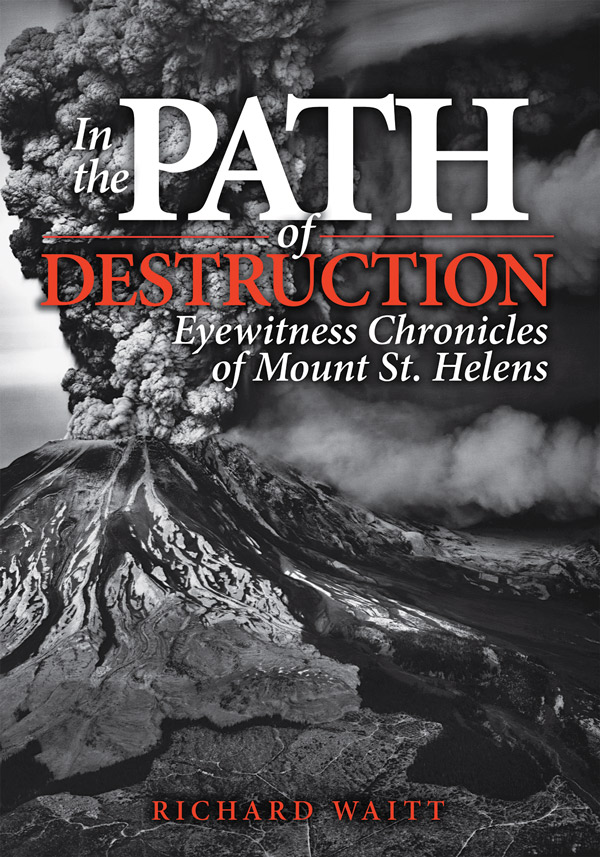Description
A napping volcano blinked awake in March 1980. Two months later, when that mountain roared, Jim Scymanky was logging a slope above Hoffstadt Creek. “Rocks zinged through the woods, bouncing off trees, then the tops of trees snapped off…Suddenly I could see nothing…it got hot right away, then scorching hot and impossible to breathe…I was being cremated, the pain unbearable.”
Mike Hubbard was further away—sixteen miles northwest, near Green River. “I was on my knees, my back to the hot wind. It blew me along, lifting my rear so I was up on my hands…It was hot but I didn’t feel burned—until I felt my ears curl.”
Steve Malone, at the University of Washington Seismology Laboratory, was inconsolable. “We’d failed. For two months we’d counted and located thousands of earthquakes, looked for changes to anticipate an eruption. Then it just happened. It killed many people…We could hardly work.”
Author Richard Waitt was part of a U.S. Geological Survey team conducting volcano research in the Cascades, and was one of the first to arrive following the mountain’s early rumblings. His journey collecting eyewitness accounts began with a conversation in a bar the third week after Mount St. Helens erupted. The couple he met barely outraced a searing ash cloud, and Waitt realized their experiences could inform geologic studies. He eventually completed hundreds of interviews—sometimes two and three decades later—often making multiple visits.
A meticulous scientist with intimate knowledge of Mount St. Helens, Waitt also tapped legal depositions, personal diaries, geologists’ field notes, and more to present a detailed and accurate chronicle of events. In the Path of Destruction depicts the eruption through unforgettable, riveting narratives—the heart of a masterful chronology that also delivers engrossing science, history, and journalism.
View the book trailer
Listen to Richard Waitt’s interview about how eyewitness accounts helped scientists on OPB’s Think Out Loud.
Here are links to book excerpts as well as short clips of Richard Waitt discussing the landslide, what actually took place, and why he wrote his book.
Illustrations / maps / notes / bibliography / index / 424 pages (2015)
Recognition
“An invaluable and sobering read.”—American Scientist, March-April 2017
“Part scientific treatise, part eyewitness chronicles, and all engrossing, this is one of the most valuable books ever written about a volcanic eruption.”—Scientific American
“Richard Waitt frames the most extraordinary geologic event of our times. In the Path of Destruction is among the most gripping and thoroughly compelling books I have read in years.”
—Robert Michael Pyle, author of Wintergreen, Where Bigfoot Walks, and Mariposa Road
“Waitt’s spare writing style only enhances the tension…like a thriller for the scientific set, but non-scientists won’t be able to put it down either.”
—Renee Struthers, East Oregonian and The Register Guard
“Can anything new be written after hundreds of papers and books published on Mount St. Helens and its 1980 eruption? Is there any aspect of this eruption left uninvestigated and unpublished after the four decades that have passed since then? Richard Waitt demonstrated that YES, there is at least one aspect that was left undocumented in sufficient detail before, that is what the survivor witnesses, those present accidentally or on duty within the influence circle of the eruption, observed and experienced personally…The book is of great benefit to anyone interested in volcanoes and their eruptions, to professionals, amateurs, and the general public alike. Firstly, it can be read as a nonfiction novel, a real thriller, including a number of personal stories, some reconstructed by the detective-style investigations of the author and his interviewees.”
—Alexandru Szakács, Bulletin of Volcanology, May 18, 2020
“The professional reader, volcanologist or geoscientist, will find a lot of relevant firsthand information on the onset and development of the eruption itself as it unfolded and was recorded by the eye-, ear-, or body-witness people who found themselves at various distances from the center of events, including those who saw only the eruption cloud hundreds of miles away from the volcano.”—Alexandru Szakács, Bulletin of Volcanology, May 18, 2020
“This book constitutes a fantastic treasure of information on one single eruption, unprecedented in volcanological literature. The plethora of directly witnessed details presented in its pages will serve as an information source for many years ahead for anyone interested in understanding the processes affecting the natural and human environment within the influence area of a volcanic eruption…I warmly recommend this outstanding, unique book, in approach and style, to anyone interested in the fascinating science of volcanology.”—Alexandru Szakács, Bulletin of Volcanology, May 18, 2020











